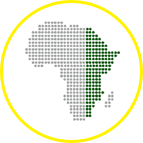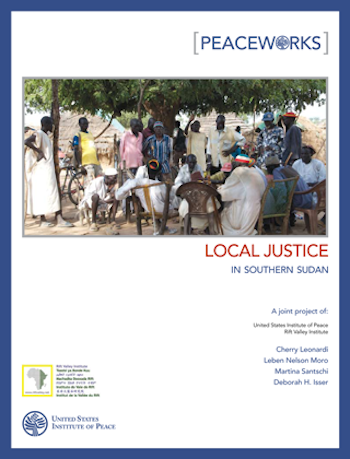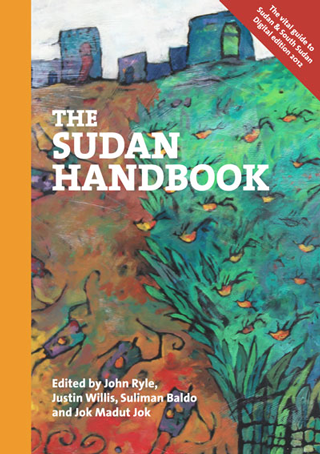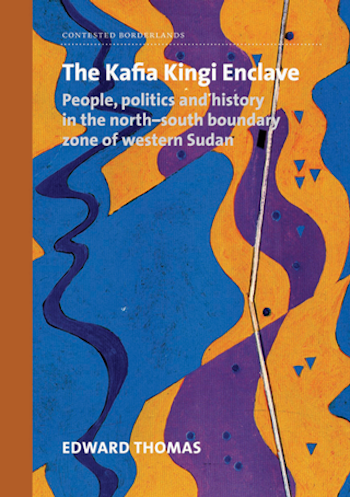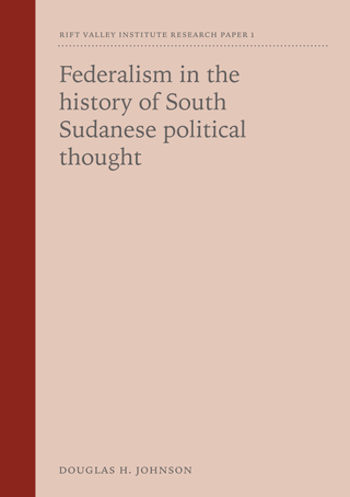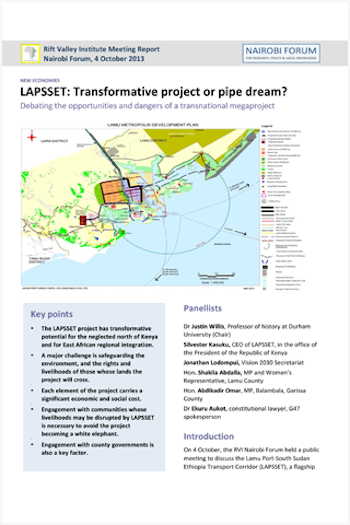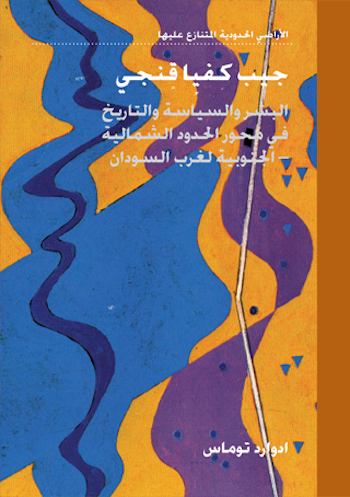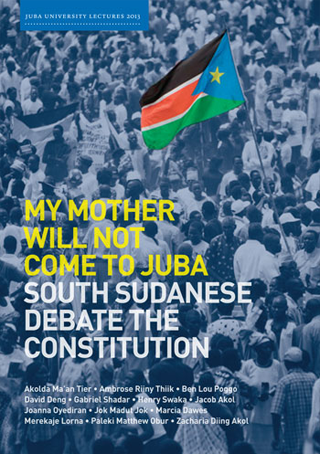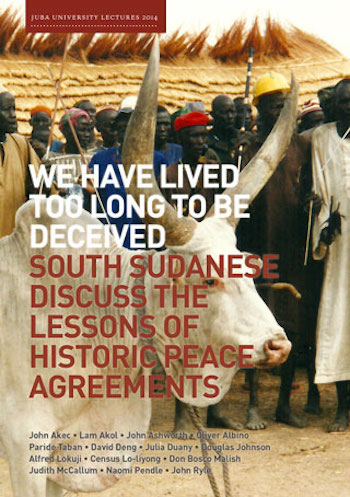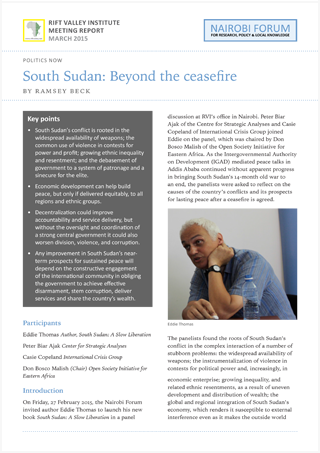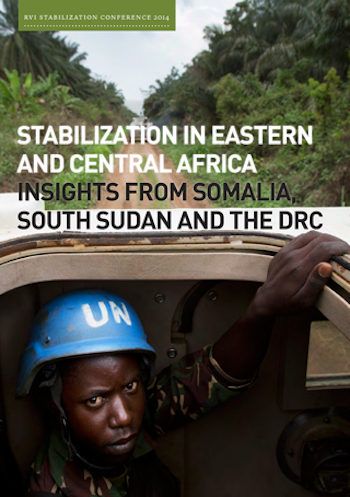This report analyses the workings of the justice system in Southern Sudan, focusing on the real-world relationship between local chiefs’ courts and government courts and the ways that litigants navigate between them. Based on extensive interviews with litigants, chiefs,…
RVI publishes books, research reports, research papers, briefings and meeting reports in a range of formats. Publications cover policy, research, arts, culture and local knowledge in the countries of eastern and central Africa. Research publications—books, reports and papers—are peer-reviewed. Some RVI publications are also available in French and/or Arabic.
The RVI is a signatory of the Budapest Open Access Initiative (2001); all publications are free for download in PDF format under Creative Commons licences. The views expressed in books and reports published by the RVI are those of the authors, not the Institute.
SEARCH
PUBLICATION TYPE
LANGUAGE
REGION
COUNTRY
Reviews Very useful… highly recommended. AFRICAN AFFAIRS Readable, thought-provoking and intelligent essays that provide a thorough introduction to Sudan and South Sudan SUDAN STUDIES Essential. Original and informative. Belongs in all African studies libraries. CHOICE Succinct and comprehensive AUSTRALASIAN REVIEW OF…
When South Sudan became a separate state in 2011, its northern boundary with the Republic of Sudan became an international border, the longest and most contentious in the region. At the westernmost extremity of Sudan, Kafia Kingi is a…
‘In South Sudan there is no system of governance so popular—yet so little understood—as the federal system. Historically the demand for federation with North Sudan was seen as the way to keep Sudan united, and the absence of such…
Key points The LAPSSET project has transformative potential for the neglected north of Kenya and for East African regional integration. A major challenge is safeguarding the environment, and the rights and livelihoods of those whose lands the project will…
تُعتبر كفيا قنجي الواقع على الطرف الغربي الأقصى للسودان نقطة إلتقاء رئيسية بين دارفور وجنوب البلاد؛ وتخضع هذه المنطقة الغنية بالمعادن حالياً لإدارة جنوب دارفور، لكن من المتوقع إعادتها إلى مقاطعة راجا في جنوب السودان بموجب بنود اتفاقية السلام…
In South Sudan delays in the making of the national constitution have led to public concern. My Mother Will Not Come to Juba: South Sudanese debate the constitution is the record of three evenings of public lectures at the University of…
In December 2013, South Sudan descended into conflict. Peace initiatives over the following eighteen months culminated in an agreement between government and armed opposition, signed in August 2015. While the agreement came into effect in late 2015, many uncertainties…
On Friday, 27 February 2015, the Nairobi Forum invited author Eddie Thomas to launch his new book South Sudan: A Slow Liberation in a panel discussion at RVI’s office in Nairobi. Peter Biar Ajak of the Centre for Strategic…
‘The conference has put into perspective what stabilization means in South Sudan as opposed to what it means in Somalia and in the DRC. And putting my own insights on stabilization alongside those of the speakers here has given…
Recent Publications
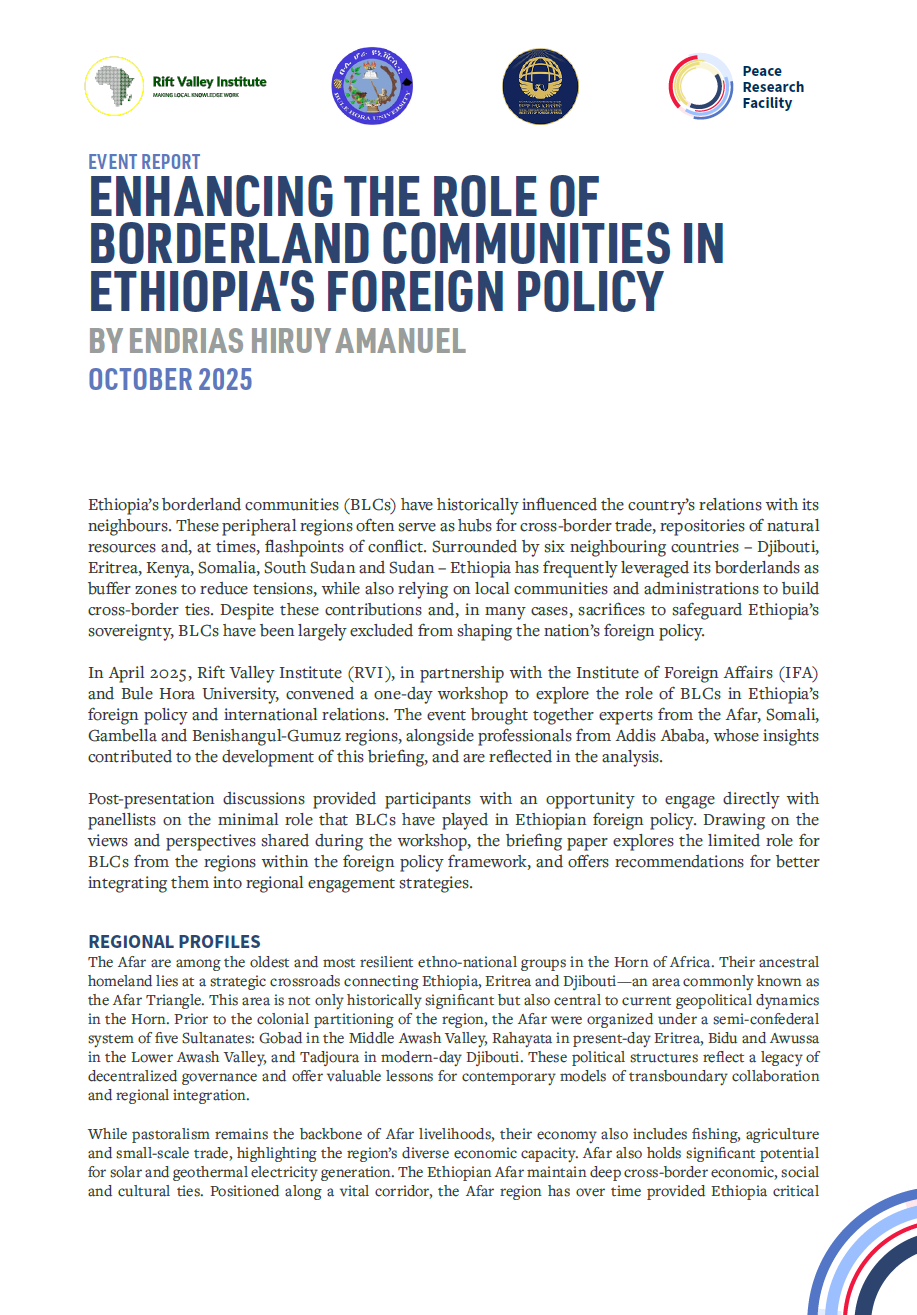
Enhancing the Role of Borderland Communities in Ethiopia’s Foreign Policy
October 15, 2025
Ethiopia’s borderland communities (BLCs) have historically influenced the country’s relations with its neighbours. These peripheral regions often serve as hubs for cross-border trade, repositories of natural resources and, at times, flashpoints of conflict. Surrounded by six neighbouring countries – Djibouti,
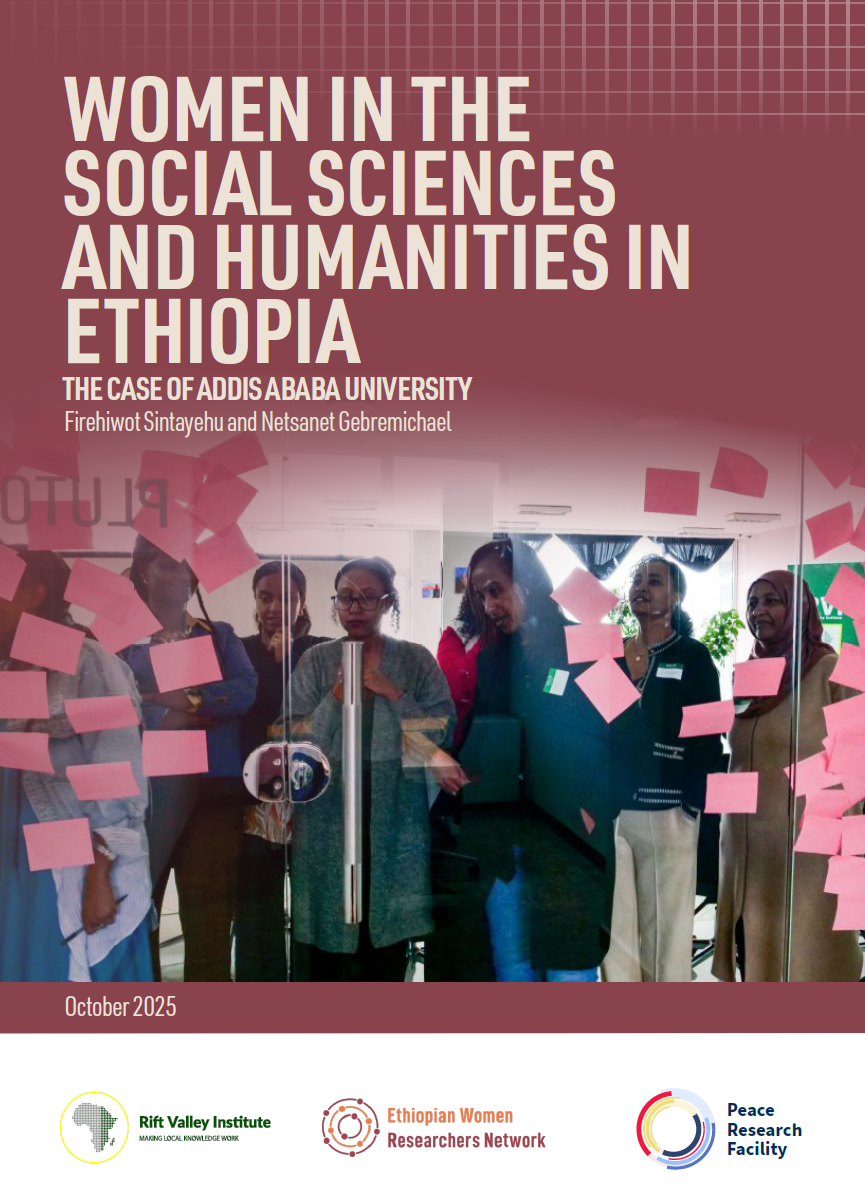
Women in the Social Sciences and Humanities in Ethiopia: The case of Addis Ababa University
October 10, 2025
This preliminary assessment is part of the launch exercise of the Ethiopian Women Researchers’ Network (EWNET). Focusing on Addis Ababa University as a pioneering higher institution in the country, the study looks into the status of women within these disciplines
Iddir in Contemporary Social Science and Humanities Research in Ethiopia: Historicizing and theorizing local infrastructures of care
October 3, 2025
The second Ethiopian Women Researchers Network (EWNET) seminar was delivered by Desalegn Amsalu, Anteneh Tesfaye, Yasmin Bushra and Helen Zeru on 3 July 2025 at Addis Ababa University’s Alle School of Fine Arts & Design. EWNET SEMINAR SERIES REPORT The
